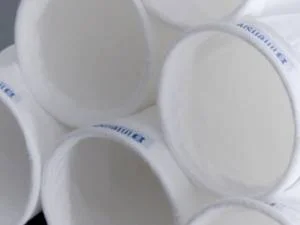Understanding Dust Extractors and Shop Vacs
Dust extractors and shop vacs are tools used to clean up dust and debris in workshops. They both help keep the work area clean and safe. However, they serve different purposes and work in different ways.
Dust extractors are designed to remove fine dust from the air and surfaces. They have powerful filters that trap tiny particles. They are often used with power tools like sanders and saws. Dust extractors keep the air clean and protect the worker’s health.
Shop vacs, on the other hand, are more versatile. They can pick up larger debris like wood shavings, dirt, and water. Shop vacs are usually used for general cleaning in the workshop and home. They are great for cleaning up messes after big projects.
Here is a simple comparison of dust extractors and shop vacs:
| Özellik | Dust Extractors | Shop Vacs |
| Main Function | Remove fine dust | Clean up large debris |
| Filtrasyon | High-efficiency filters | Standard filters |
| Typical Use | With power tools | General cleaning |
| Hava Kalitesi | Improves air quality | No focus on air quality |
| Boyut ve Taşınabilirlik | Usually smaller and portable | Often larger and heavier |
Both tools help maintain a clean workspace, but they do it in different ways. Understanding their functions helps users choose the right tool for their needs.
Key Differences Between Dust Extractors and Shop Vacs
Dust extractors and shop vacs serve different purposes. Here are the key differences between them:
- Suction Power: Dust extractors have stronger suction power than shop vacs. This helps them pick up fine dust and debris more effectively. Shop vacs are good for larger debris but may struggle with tiny particles.
- Filtration Efficiency: Dust extractors use better filters. They often have HEPA filters that can trap small particles. Shop vacs usually have standard filters that might let some dust escape back into the air.
- Gürültü Seviyeleri: Dust extractors are generally quieter than shop vacs. They are designed to work in environments like workshops where noise can be a problem. Shop vacs can be loud and may disturb others nearby.
- Portability: Shop vacs are usually lighter and easier to move around. They often have wheels and handles for convenience. Dust extractors can be heavier and may require more effort to transport.
- Fiyat: Dust extractors tend to be more expensive than shop vacs. This is due to their advanced features and better performance. Shop vacs are budget-friendly and can be a good choice for simple cleaning tasks.
Advantages and Disadvantages
Dust extractors and shop vacs both have their own advantages and disadvantages. It is important to look at both sides to understand which one is better for different situations.
Advantages of Dust Extractors:
- Dust extractors have powerful suction. They can pick up fine dust and small particles easily.
- They often come with special filters. These filters trap harmful dust and protect users’ health.
- Dust extractors are quieter than shop vacs. They create less noise during use.
- Many dust extractors have attachments for different tools. This makes them more versatile for various tasks.
Disadvantages of Dust Extractors:
- Dust extractors can be more expensive. They cost more than basic shop vacs.
- They may require special bags or filters. This can add to the overall cost of using them.
- Some dust extractors are heavier. This can make them harder to move around.
Advantages of Shop Vacs:
- Shop vacs are cheaper. They are often more affordable than dust extractors.
- They are easy to find in stores. Many people can buy them without any trouble.
- Shop vacs are good for big messes. They can handle larger debris like dirt and leaves.
Disadvantages of Shop Vacs:
- Shop vacs do not filter fine dust well. They may release some dust back into the air.
- They are usually louder. Users may find the noise annoying when using them.
- Shop vacs may not have special attachments. They might not work as well with specific tools.
Choosing the Right Tool for Your Workshop
Choosing the right tool for your workshop is important. The right tool can make work easier and safer. To select the best tool, consider the size of the workshop first. A small workshop may need different tools than a large one.
Next, think about the types of tools used. Different tasks need different tools. For example, cutting wood needs saws, while sanding needs sanders. Make a list of tasks to find out which tools are necessary.
Dust types are also important. Some tools create more dust than others. If the workshop produces a lot of dust, a good dust collection system is needed. This will keep the area clean and safe.
Budget considerations are crucial. Tools can be expensive. It is smart to set a budget before shopping. Look for tools that fit the budget but also meet the needs of the workshop. Sometimes, it is better to invest in a good quality tool that lasts longer.
To help with the selection process, a simple flowchart can be useful. Start with the workshop size. Then move to the types of tools needed. Next, check the dust types produced. Finally, consider the budget. Following these steps will help in choosing the right tool for the workshop.
Enhancing Dust Collection Efficiency
Enhancing dust collection efficiency is important for keeping workspaces clean and safe. There are many accessories and modifications that can help improve dust collection performance. Here are some useful options:
- Siklon Ayırıcılar: Cyclone separators work by spinning the air. They separate larger dust particles from the air before it reaches the main dust collector. This reduces the load on the dust collector and helps it work better.
- HEPA Filtreler: HEPA filters trap tiny dust particles that other filters might miss. They can capture 99.97% of particles that are 0.3 microns or larger. Using HEPA filters can greatly improve air quality in a workspace.
- Dust Hoods: Dust hoods are placed near the source of dust. They catch dust right where it is created. This prevents dust from spreading into the air and helps the dust collector work more efficiently.
- Kanalizasyon: Proper ducting helps move dust from the source to the collector. Smooth and straight ducting reduces airflow resistance. This means dust travels more easily to the collector, improving overall performance.
- Patlama Kapıları: Blast gates control airflow in duct systems. By opening or closing them, users can direct airflow to specific machines. This helps focus the dust collection where it is needed most.
These accessories can make dust collection systems much more effective. Using them helps create a cleaner and safer environment for everyone.
Environmental Impact and Health Considerations
Fine dust can harm health. People can breathe in tiny particles, which can lead to serious problems. Proper dust collection can help keep air clean and reduce these risks.
- Fine dust can cause respiratory issues. It can make it hard to breathe and lead to asthma.
- Long-term exposure to fine dust can lead to heart disease. The particles can get into the bloodstream and affect the heart.
- Fine dust can cause irritation. It can make eyes, nose, and throat feel uncomfortable or painful.
- Children and elderly people are more at risk. Their bodies can be more sensitive to dust.
To reduce these health risks, proper dust collection is important.
- Use air filters. High-efficiency particulate air (HEPA) filters can trap fine dust and keep it from spreading.
- Keep spaces clean. Regular cleaning can prevent dust buildup and keep air fresh.
- Use dust collection systems. These systems can capture dust at the source, reducing exposure.
- Wear masks. Masks can help protect lungs when working in dusty areas.
By using these methods, people can lower the health risks linked to fine dust exposure.
Çözüm
Choosing the right dust collection system is very important for workshop safety and efficiency. A good dust collection system helps keep the air clean, reduces health risks, and makes the workspace safer. It also helps maintain tools and equipment by reducing dust build-up.
Everyone should assess their workshop needs carefully. This means looking at the type of work done, the amount of dust produced, and the space available. Investing in the right dust collection solution can make a big difference. A clean workshop is a safe workshop, and safety should always come first.



